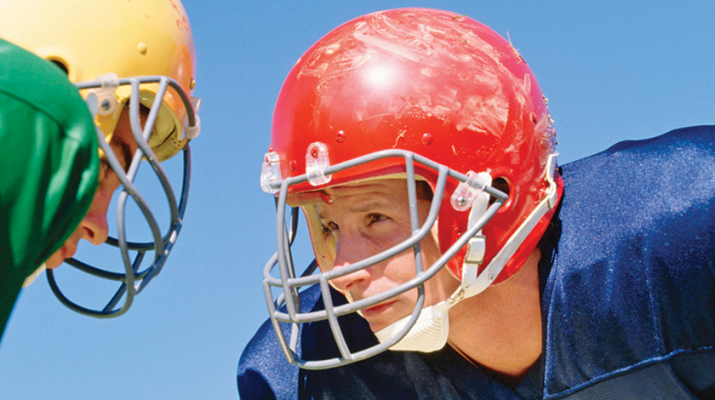Experts: Play safe, protect your head, identify when the problem arises
By Deborah Jeanne Sergeant

While participating in school sports promotes teamwork skills, fitness and healthy self-image, student athletes can sustain serious, even lifelong injuries or die because of concussions.
Emergency personnel treat more than 170,000 school-aged children and teens annually for traumatic brain injuries, which include concussions related to recreation or sports, according to the Centers for Disease Control.
Before your children don their uniforms, consider how you can help lower their risk.
“Prevention is the hardest part,” said Renee Reynolds, pediatric neurosurgeon with Kaleida Health at Women & Children’s Hospital of Buffalo.
But recognizing and ensuring recovery from concussion can help prevent further damage.
There’s no “safe” sport, so pulling your children out of football, lacrosse, hockey and soccer won’t eliminate the chance of sustaining a concussion. However, those sports do tend to see the highest rates of concussions.
Any type of sport in which a participant falls, is shaken, or receives a blow to the head can cause a concussion. One that surprises many parents is cheerleading. Though not a contact sport, the activity places participants high in the air where a fall or missed catch can be disastrous.
“Clinically, we see the most complications from women’s soccer,” Reynolds said. “We’re not quite sure why. It may have to do with different bodily structure like musculature in the upper body and neck. Any sport is a risk.”
Concussions can cause short-term symptoms, including headache, confusion, loss of consciousness, nausea, vision disturbance, lack of memory about the incident, slurred speech and dizziness. Secondary concussions can cause more serious consequences, including lifelong brain damage or death.
The key to preventing serious concussion injury lies in protection, playing safely and identifying concussion.
Ensure your children have and use any protective gear appropriate for the activity every time they participate, including practices at home at school. Explain why the equipment is important. Though teens tend to think nothing bad will happen to them, statistically, it may.

“The symptoms can be subtle at first,” Reynolds said. “It takes a qualified person. Many high school athletes may not recognize it themselves.”
Visit your children’s school during a practice to see how safety equipment and rules are enforced. Coaches and other players should not encourage rough play, though the CDC states that rough or illegal play contribute to about 25 percent of concussion incidences.
Many school coaches teach football players to keep their heads up, not down, when tackling to reduce the risk.
The school’s athletic department should also maintain a concussion awareness program, which includes removing athletes from play who may have suffered a concussion. They should follow a return to play protocol that includes a physician’s examination and clearance.
“Any potential symptom of a concussion should be taken seriously and they should report that to the parents, trainer, or coach so the adult can remove the child from play before they sustain another head injury,” said John Leddy, director of the Concussion Management Clinic at University Buffalo. “The worst thing that can happen is that a student gets hit, has symptoms and they just choose to ignore symptoms and get hit again.”
Leddy also serves as a clinical professor of orthopedics at the Jacobs School of Medicine and Biomedical Sciences and physician with UBMD Orthopaedics and Sports Medicine.
Telling athletes to “shake it off” and return to play endangers their health and, possibly their lives. Although it’s rare, athletes have died from secondary concussions.
It’s not worth the risk.
“You can’t prevent all concussions, but you can identify them and get them checked and make sure they’re fully recovered before playing again,” Leddy said.
For more information about preventing concussion injuries, visit http://www.cdc.gov/headsup/index.html.
7 Ways to Avoid Serious Injury From School Sports
- Good nutrition and proper hydration are key.
- It’s important to stretch, warm up and cool down for practices and games or competitions.
- Practice and use proper techniques for your sport, such as tackling in football; tumbling in gymnastics; and running, jumping and landing in basketball and track events.
- Always wear all recommended safety equipment, and be sure it fits properly.
- Cheerleaders and gymnasts should train only in properly equipped facilities with recommended safety equipment, including quality tumbling mats.
- Basketball players and track-and-field athletes shouldn’t push themselves too hard because doing so increases the risk for overuse injuries.
- Remember that rest is an important part of the training cycle.
From physician Jennifer Beck, specialist in pediatric sports medicine at the University of California, Los Angeles Medical Center.

